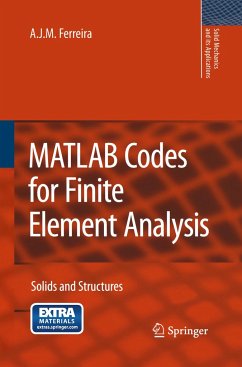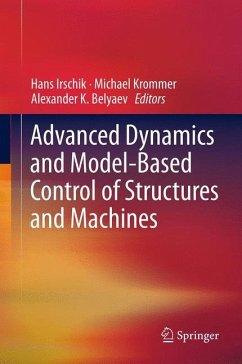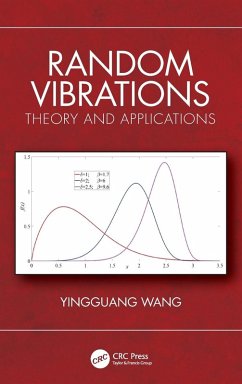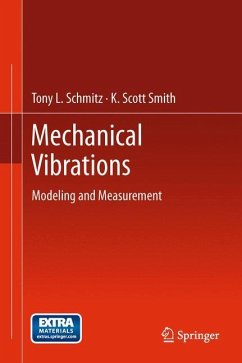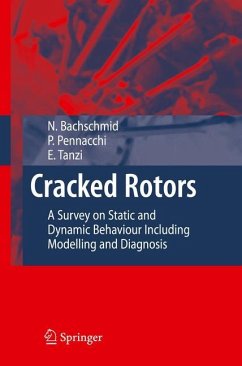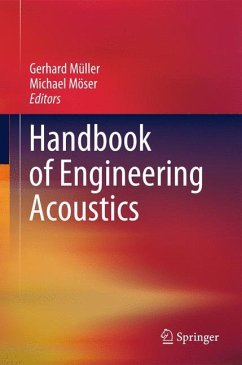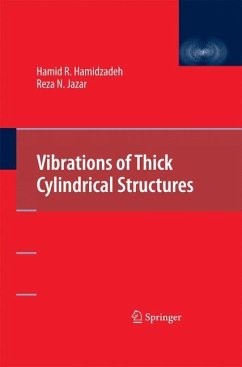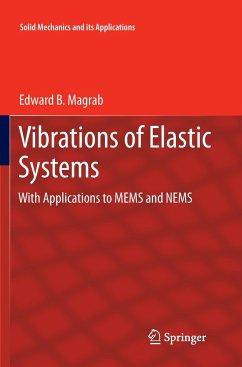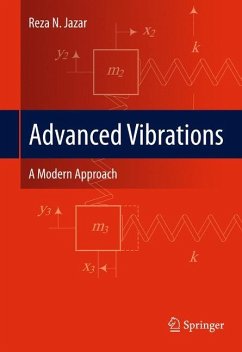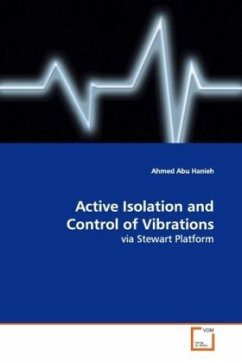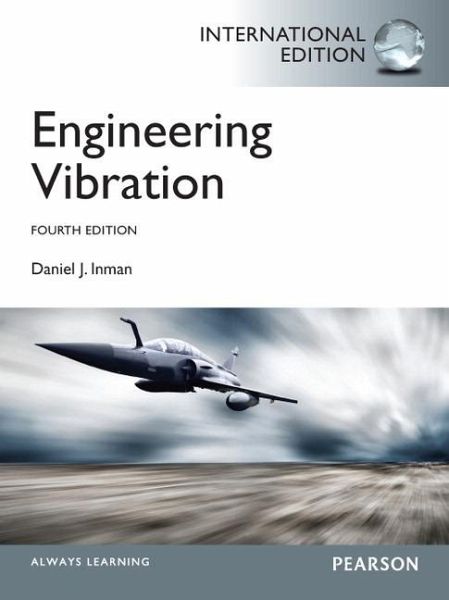
Engineering Vibrations

PAYBACK Punkte
37 °P sammeln!
For one/two-semester introductory courses in vibration for undergraduates in Mechanical Engineering, Civil Engineering, Aerospace Engineering and Mechanics
Serving as both a text and reference manual, Engineering Vibration, 4e, connects traditional design-oriented topics, the introduction of modal analysis, and the use of MATLAB, Mathcad, or Mathematica. The author provides an unequaled combination of the study of conventional vibration with the use of vibration design, computation, analysis and testing in various engineering applications.
Teaching and Learning Experience
To provide a better teaching and learning experience, for both instructors and students, this program will:
Apply Theory and/or Research: An unequaled combination of the study of conventional vibration with the use of vibration design, computation, analysis and testing in various engineering applications.
Prepare Students for their Career: Integrated computational software packages provide students with skills required by industry.
Features + Benefits
APPLY THEORY AND/OR RESEARCH
Special-interest windows are placed throughout the text where prior or background information summaries are required. This helps remind students of essential information pertinent to the text material, so they don’t have to flip back to previous chapters or consult a reference text for formulas or other information.
Examines topics that reflect some of the recent advances in vibration technology, changes in ABET criteria and the increased importance of both engineering design and modal analysis.
In the Design for Vibration Suppression Chapter, students put vibration analysis into practice by learning how to use vibration theory to design systems, structures and devices. Use of computational codes throughout fully integrates modern software tools into the study of vibration, satisfying ABET criteria.
To help students relate design and analysis, nearly every topic contains design-related examples or discussions.
PREPARE STUDENTS FOR THEIR CAREER
Computational software packages are integrated the text material to provide students with skills required by industry. This also allows early introduction to nonlinear vibration.
Incorporates MATLAB, Engineering Vibration Toolbox, Mathematica, and Mathcad throughout to allow students to conduct and explore vibration analysis, “what if” studies, and design.
Toolbox offers professional quality computer analyses, including basics, introduction to modal analysis with actual experimental data files and finite elements. Students are challenged with over 65 computer problems including use of manufacture's design charts, measurement analysis, and matrix eigenvalue computing for frequencies and modes.
Contents
Preface viii
1 Introduction To Vibration and the Free Response 1
1.1 Introduction to Free Vibration 2
1.2 Harmonic Motion 13
1.3 Viscous Damping 21
1.4 Modeling and Energy Methods 31
1.5 Stiffness 46
1.6 Measurement 58
1.7 Design Considerations 63
1.8 Stability 68
1.9 Numerical Simulation of the Time Response 72
1.10 Coulomb Friction and the Pendulum 81
Problems 95
MATLAB Engineering Vibration Toolbox 115
Toolbox Problems 116
2 Response To Harmonic Excitation 117
2.1 Harmonic Excitation of Undamped Systems 118
2.2 Harmonic Excitation of Damped Systems 130
2.3 Alternative Representations 144
2.4 Base Excitation 151
2.5 Rotating Unbalance 160
2.6 Measurement Devices 1662.7 Other Forms of Damping 170
2.8 Numerical Simulation and Design 180
2.9 Nonlinear Response Properties 188
Problems 197
MATLAB Engineering Vibration Toolbox 214
Toolbox Problems 214
3 General Forced Response 216
3.1 Impulse Response Function 217
3.2 Response to an Arbitrary Input 226
3.3 Response to an Arbitrary Periodic Input 235
3.4 Transform Methods 242
3.5 Response to Random Inputs 247
3.6 Shock Spectrum 255
3.7 Measurement via Transfer Functions 260
3.8 Stability 262
3.9 Numerical Simulation of the Response 267
3.10 Nonlinear Response Properties 279
Problems 287
MATLAB Engineering Vibration Toolbox 301
Toolbox Problems 301
4 Multiple-Degree-of-Freedom Systems 303
4.1 Two-Degree-of-Freedom Model (Undamped) 304
4.2 Eigenvalues and Natural Frequencies 317
4.3 Modal Analysis 331
4.4 More Than Two Degrees of Freedom 339
4.5 Systems with Viscous Damping 355
4.6 Modal Analysis of the Forced Response 361
4.7 Lagrange’s Equations 368
4.8 Examples 376
4.9 Computational Eigenvalue Problems for Vibration 388
4.10 Numerical Simulation of the Time Response 406
Problems 414
MATLAB Engineering Vibration Toolbox 432
Toolbox Problems 432
5 Design for Vibration Suppression 433
5.1 Acceptable Levels of Vibration 434
5.2 Vibration Isolation 440
5.3 Vibration Absorbers 453
5.4 Damping in Vibration Absorption 461
5.5 Optimization 469
5.6 Viscoelastic Damping Treatments 477
5.7 Critical Speeds of Rotating Disks 483
Problems 489
MATLAB Engineering Vibration Toolbox 499
Toolbox Problems 499
6 Distributed-Parameter Systems 500
6.1 Vibration of a String or Cable 502
6.2 Modes and Natural Frequencies 506
6.3 Vibration of Rods and Bars 517
6.4 Torsional Vibration 523
6.5 Bending Vibration of a Beam 530
6.6 Vibration of Membranes and Plates 542
6.7 Models of Damping 548
6.8 Modal Analysis of the Forced Response 554
Problems 564
MATLAB Engineering Vibration Toolbox 570
Toolbox Problems 570
7 Vibration Testing and Experimental Modal Analysis 571
7.1 Measurement Hardware 573
7.2 Digital Signal Processing 577
7.3 Random Signal Analysis in Testing 582
7.4 Modal Data Extraction 586
7.5 Modal Parameters by Circle Fitting 589
7.6 Mode Shape Measurement 594
7.7 Vibration Testing for Endurance and Diagnostics 604
7.8 Operational Deflection Shape Measurement 607
Problems 609
MATLAB Engineering Vibration Toolbox 613
Toolbox Problems 614
8 Finite Element Method 615
8.1 Example: The Bar 617
8.2 Three-Element Bar 623
8.3 Beam Elements 628
8.4 Lumped-Mass Matrices 636
8.5 Trusses 639
8.6 Model Reduction 644
Problems 647
MATLAB Engineering Vibration Toolbox 654
Toolbox Problems 654
Appendix A Complex Numbers and Functions 655
Appendix B Laplace Transforms 661
Appendix C Matrix Basics 666
Appendix D The Vibration Literature 678
Appendix E List of Symbols 680
Appendix F Codes and Web Sites 685
Appendix G Engineering Vibration Toolbox and Web Support 686
References 688
Answers to Selected Problems 690
Index 697
Serving as both a text and reference manual, Engineering Vibration, 4e, connects traditional design-oriented topics, the introduction of modal analysis, and the use of MATLAB, Mathcad, or Mathematica. The author provides an unequaled combination of the study of conventional vibration with the use of vibration design, computation, analysis and testing in various engineering applications.
Teaching and Learning Experience
To provide a better teaching and learning experience, for both instructors and students, this program will:
Apply Theory and/or Research: An unequaled combination of the study of conventional vibration with the use of vibration design, computation, analysis and testing in various engineering applications.
Prepare Students for their Career: Integrated computational software packages provide students with skills required by industry.
Features + Benefits
APPLY THEORY AND/OR RESEARCH
Special-interest windows are placed throughout the text where prior or background information summaries are required. This helps remind students of essential information pertinent to the text material, so they don’t have to flip back to previous chapters or consult a reference text for formulas or other information.
Examines topics that reflect some of the recent advances in vibration technology, changes in ABET criteria and the increased importance of both engineering design and modal analysis.
In the Design for Vibration Suppression Chapter, students put vibration analysis into practice by learning how to use vibration theory to design systems, structures and devices. Use of computational codes throughout fully integrates modern software tools into the study of vibration, satisfying ABET criteria.
To help students relate design and analysis, nearly every topic contains design-related examples or discussions.
PREPARE STUDENTS FOR THEIR CAREER
Computational software packages are integrated the text material to provide students with skills required by industry. This also allows early introduction to nonlinear vibration.
Incorporates MATLAB, Engineering Vibration Toolbox, Mathematica, and Mathcad throughout to allow students to conduct and explore vibration analysis, “what if” studies, and design.
Toolbox offers professional quality computer analyses, including basics, introduction to modal analysis with actual experimental data files and finite elements. Students are challenged with over 65 computer problems including use of manufacture's design charts, measurement analysis, and matrix eigenvalue computing for frequencies and modes.
Contents
Preface viii
1 Introduction To Vibration and the Free Response 1
1.1 Introduction to Free Vibration 2
1.2 Harmonic Motion 13
1.3 Viscous Damping 21
1.4 Modeling and Energy Methods 31
1.5 Stiffness 46
1.6 Measurement 58
1.7 Design Considerations 63
1.8 Stability 68
1.9 Numerical Simulation of the Time Response 72
1.10 Coulomb Friction and the Pendulum 81
Problems 95
MATLAB Engineering Vibration Toolbox 115
Toolbox Problems 116
2 Response To Harmonic Excitation 117
2.1 Harmonic Excitation of Undamped Systems 118
2.2 Harmonic Excitation of Damped Systems 130
2.3 Alternative Representations 144
2.4 Base Excitation 151
2.5 Rotating Unbalance 160
2.6 Measurement Devices 1662.7 Other Forms of Damping 170
2.8 Numerical Simulation and Design 180
2.9 Nonlinear Response Properties 188
Problems 197
MATLAB Engineering Vibration Toolbox 214
Toolbox Problems 214
3 General Forced Response 216
3.1 Impulse Response Function 217
3.2 Response to an Arbitrary Input 226
3.3 Response to an Arbitrary Periodic Input 235
3.4 Transform Methods 242
3.5 Response to Random Inputs 247
3.6 Shock Spectrum 255
3.7 Measurement via Transfer Functions 260
3.8 Stability 262
3.9 Numerical Simulation of the Response 267
3.10 Nonlinear Response Properties 279
Problems 287
MATLAB Engineering Vibration Toolbox 301
Toolbox Problems 301
4 Multiple-Degree-of-Freedom Systems 303
4.1 Two-Degree-of-Freedom Model (Undamped) 304
4.2 Eigenvalues and Natural Frequencies 317
4.3 Modal Analysis 331
4.4 More Than Two Degrees of Freedom 339
4.5 Systems with Viscous Damping 355
4.6 Modal Analysis of the Forced Response 361
4.7 Lagrange’s Equations 368
4.8 Examples 376
4.9 Computational Eigenvalue Problems for Vibration 388
4.10 Numerical Simulation of the Time Response 406
Problems 414
MATLAB Engineering Vibration Toolbox 432
Toolbox Problems 432
5 Design for Vibration Suppression 433
5.1 Acceptable Levels of Vibration 434
5.2 Vibration Isolation 440
5.3 Vibration Absorbers 453
5.4 Damping in Vibration Absorption 461
5.5 Optimization 469
5.6 Viscoelastic Damping Treatments 477
5.7 Critical Speeds of Rotating Disks 483
Problems 489
MATLAB Engineering Vibration Toolbox 499
Toolbox Problems 499
6 Distributed-Parameter Systems 500
6.1 Vibration of a String or Cable 502
6.2 Modes and Natural Frequencies 506
6.3 Vibration of Rods and Bars 517
6.4 Torsional Vibration 523
6.5 Bending Vibration of a Beam 530
6.6 Vibration of Membranes and Plates 542
6.7 Models of Damping 548
6.8 Modal Analysis of the Forced Response 554
Problems 564
MATLAB Engineering Vibration Toolbox 570
Toolbox Problems 570
7 Vibration Testing and Experimental Modal Analysis 571
7.1 Measurement Hardware 573
7.2 Digital Signal Processing 577
7.3 Random Signal Analysis in Testing 582
7.4 Modal Data Extraction 586
7.5 Modal Parameters by Circle Fitting 589
7.6 Mode Shape Measurement 594
7.7 Vibration Testing for Endurance and Diagnostics 604
7.8 Operational Deflection Shape Measurement 607
Problems 609
MATLAB Engineering Vibration Toolbox 613
Toolbox Problems 614
8 Finite Element Method 615
8.1 Example: The Bar 617
8.2 Three-Element Bar 623
8.3 Beam Elements 628
8.4 Lumped-Mass Matrices 636
8.5 Trusses 639
8.6 Model Reduction 644
Problems 647
MATLAB Engineering Vibration Toolbox 654
Toolbox Problems 654
Appendix A Complex Numbers and Functions 655
Appendix B Laplace Transforms 661
Appendix C Matrix Basics 666
Appendix D The Vibration Literature 678
Appendix E List of Symbols 680
Appendix F Codes and Web Sites 685
Appendix G Engineering Vibration Toolbox and Web Support 686
References 688
Answers to Selected Problems 690
Index 697
Intended for use in one/two-semester introductory courses in vibration for undergraduates in Mechanical Engineering, Civil Engineering, Aerospace Engineering and Mechanics. This text is also suitable for readers with an interest in Mechanical Engineering, Civil Engineering, Aerospace Engineering and Mechanics.
Serving as both a text and reference manual, Engineering Vibration, 4e, connects traditional design-oriented topics, the introduction of modal analysis, and the use of MATLAB, Mathcad, or Mathematica. The author provides an unequaled combination of the study of conventional vibration with the use of vibration design, computation, analysis and testing in various engineering applications.
Serving as both a text and reference manual, Engineering Vibration, 4e, connects traditional design-oriented topics, the introduction of modal analysis, and the use of MATLAB, Mathcad, or Mathematica. The author provides an unequaled combination of the study of conventional vibration with the use of vibration design, computation, analysis and testing in various engineering applications.




